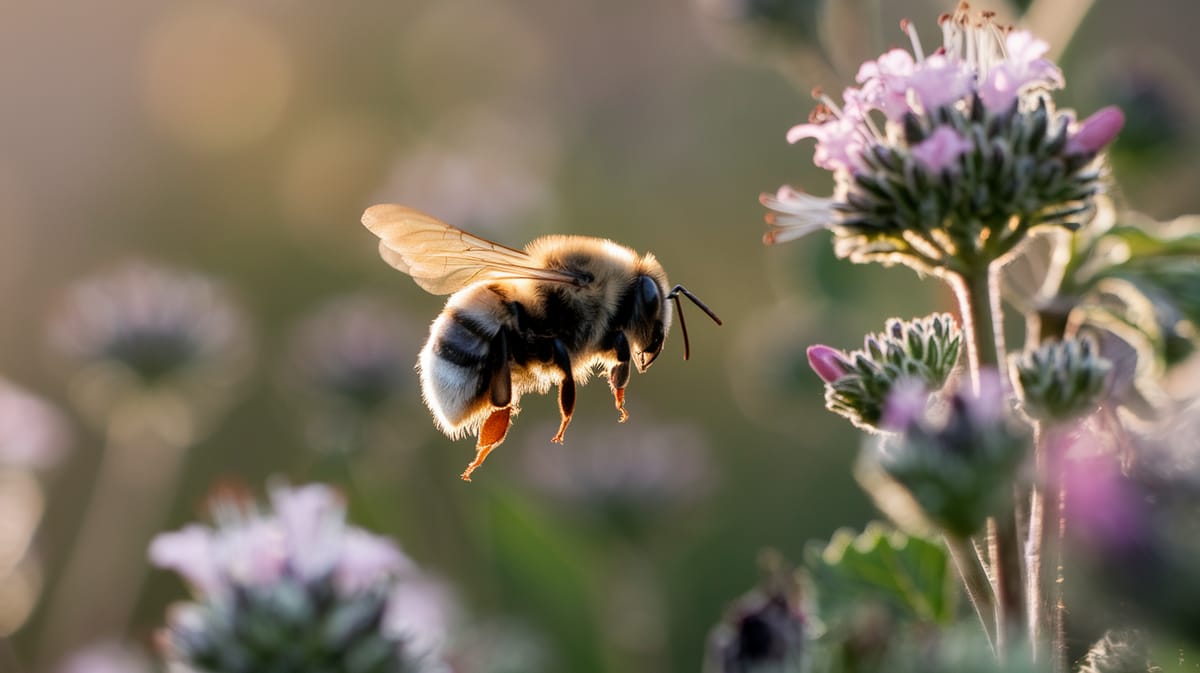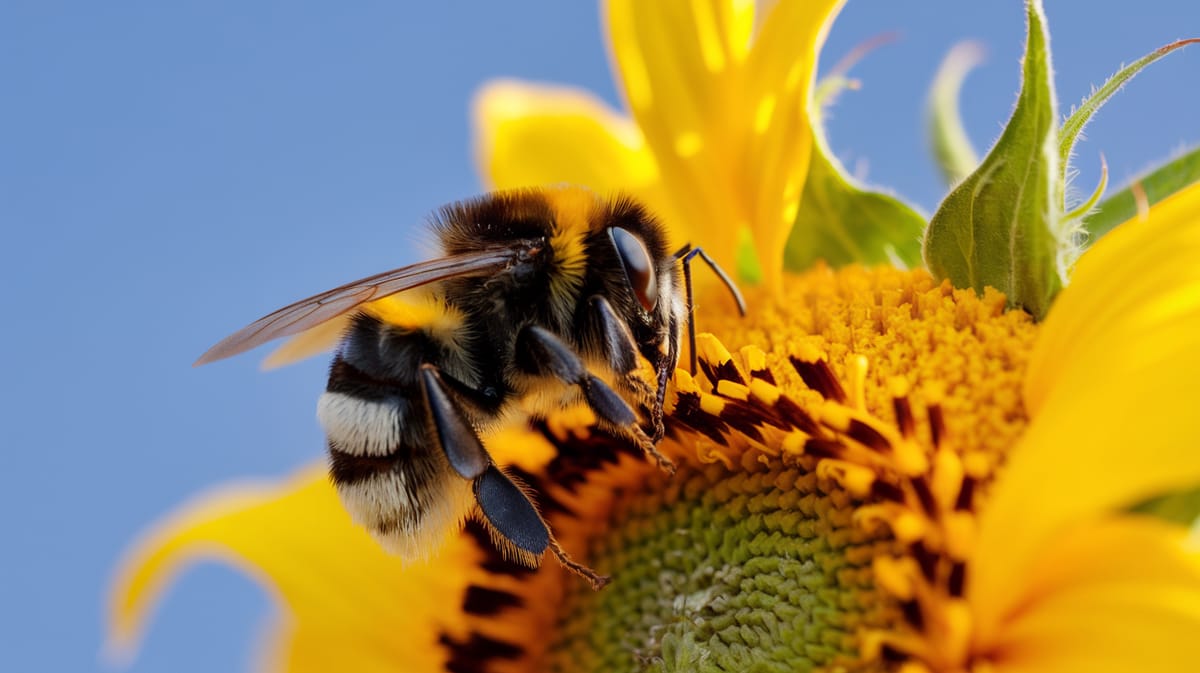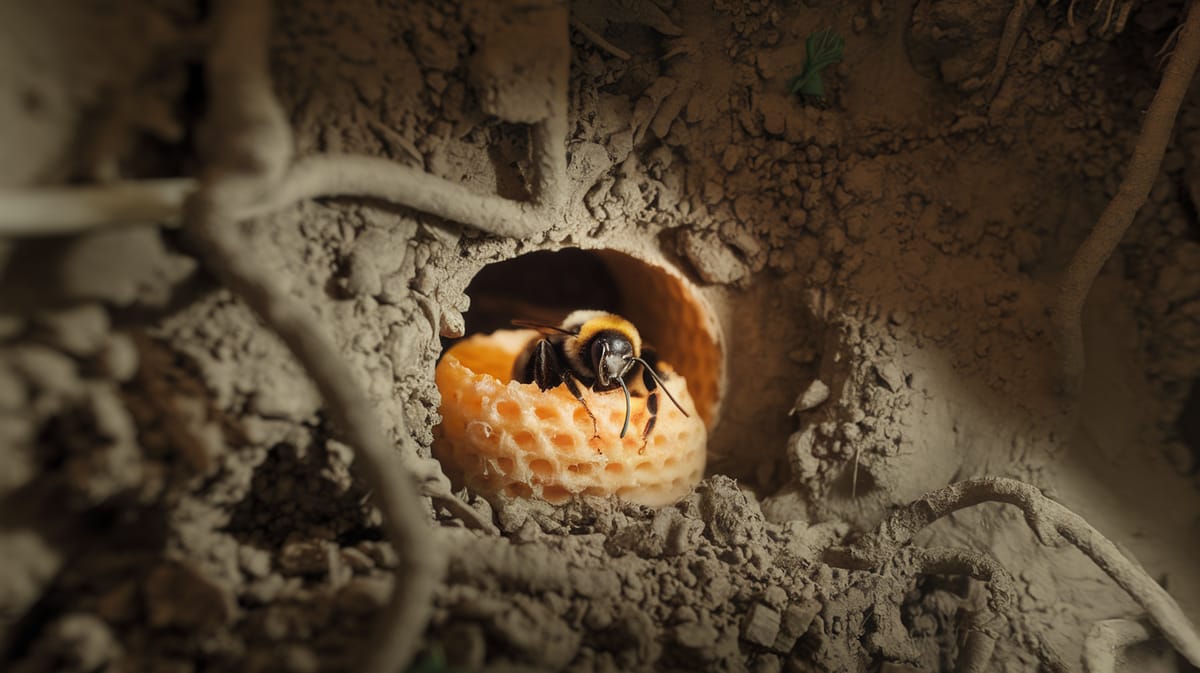Bumble Bee
Buzzing with purpose and vitality, the Bumble Bee plays a crucial role in pollinating plants, supporting biodiversity, and enriching ecosystems with its tireless work ethic. Its fuzzy appearance and gentle demeanor belie the essential functions it performs in nature's grand cycle.

Key Insights at a Glance
Did You Know?
Taxonomy & Classification
Bumble bees are vital pollinators, distinguished by their social behavior, fuzzy bodies, and unique buzzing technique aiding in pollen collection. Let's understand the evolutionary journey and classification of these remarkable pollinators.
Global Diversity
Bumble bees consist of over 250 species distributed mainly in the Northern Hemisphere, thriving in temperate climates across various ecosystems.
Resilient Adaptations
Originating about 30 million years ago, bumble bees have evolved to withstand cold environments, using their ability to regulate body temperature for survival.
Lifecycle and Growth
A remarkable journey of transformation from Egg to Adult.
Egg
Tiny eggs laid by the queen develop rapidly within the protective brood comb, beginning the bumble bee's life cycle.
Larva
Larvae voraciously consume pollen and nectar, experiencing rapid growth through a series of molts to prepare for pupation.
Pupa
In this transformative stage, the larva undergoes metamorphosis, developing wings, legs, and adult features inside a silk cocoon.
Adult
Emerging as fully formed bumble bees, adults participate in foraging, colony defense, and reproduction to sustain the hive.
Dietary Habits
A diligent forager, it gathers nectar from flowers, using its tongue and pollen baskets for efficient collection.
| DIET TYPE | DESCRIPTION |
|---|---|
| Primary Diet | Relies heavily on nectar from a wide variety of flowering plants, particularly those with deep corollas. |
| Secondary Diet | Collects pollen as a protein source for brood rearing, favoring plants like clover and sunflowers. |
| Occasional | Occasionally consumes honeydew or sap, especially when floral resources are scarce or unavailable. |

Behaviour and Adaptations
Discover the fascinating traits and adaptations that enable the Bumble Bee to thrive in diverse environments.
Buzz Communication
Bumble bees use vibrations to communicate and locate flowers.
Temperature Regulation
Bumble bees generate heat by shivering muscles to stay active in cooler temperatures.
Efficient Pollination
Their fuzzy bodies and buzzing enhance pollination of flowers.
Ecosystem Impact
Vital roles of Bumble Bees in maintaining ecological balance and sustainability.
Efficient Pollinators
Bumble Bees pollinate a wide variety of plants, crucial for food crops and wild flora.
Biodiversity Boosters
Their pollination activities enhance plant diversity, supporting diverse wildlife habitats.
Climate Resilience
By pollinating diverse plants, they help ecosystems adapt to changing climates.
Conservation Challenges
Addressing the major threats to Bumble Bee survival and ecosystem health.
Habitat Loss
Urbanization and agriculture reduce bumble bee foraging areas and nesting sites.
Pesticide Use
Pesticides disrupt bumble bee health and reproduction.
Climate Change
Temperature shifts alter blooming patterns and bumble bee activity.
Frequently Asked Questions
How long do Bumble Bee live?
Bumble bees typically live for a few weeks to a few months, depending on the role within the colony. Worker bees live about a month, while queens can survive up to a year, especially if they hibernate during winter.
What do Bumble Bee eat?
Bumble bees primarily feed on nectar and pollen from flowers. Nectar provides them with energy, while pollen offers essential proteins and nutrients. They play a significant role in pollinating various plants and crops through their feeding activities.
Are Bumble Bee poisonous?
Bumble bees are not poisonous, but they can sting. Unlike some bees, they can sting multiple times. The sting is not generally dangerous unless the person is allergic. Their stings are more a defense mechanism than a form of poison.
Are Bumble Bee endangered?
Some bumble bee species are considered endangered due to habitat loss, pesticide use, and climate change. Conservation efforts focus on preserving their habitats and reducing harmful pesticide usage to help protect these vital pollinators.
What do Bumble Bee symbolize?
Bumble bees often symbolize community, persistence, and productivity. They are admired for their hard work and ability to accomplish tasks against the odds, making them a popular emblem of determination and cooperation in various cultures.
Do Bumble Bee bite?
Bumble bees do not bite; they sting to defend themselves or their colony. Their stingers are not barbed, allowing them to sting multiple times. They usually sting only when provoked or threatened.
What color are Bumble Bee?
Bumble bees are typically black and yellow, with some species having orange or red bands. Their coloration serves as a warning to predators about their ability to sting. The distinctive pattern can vary among different bumble bee species.
Does a Bumble Bee have wings?
Yes, bumble bees have two pairs of wings. The front wings are larger than the back ones. Their wings beat rapidly, allowing them to hover and fly in various directions, which aids in their adept pollination skills.
What does a Bumble Bee look like?
Bumble bees are robust and furry insects with black and yellow bands. They have a rounded body, large eyes, and two pairs of wings. Their legs are hairy, aiding in pollen collection. This distinctive appearance helps them stand out among other bees.
Is a Bumble Bee an insect?
Yes, a bumble bee is an insect. It belongs to the order Hymenoptera, which includes bees, wasps, and ants. As insects, they have three main body parts: the head, thorax, and abdomen, along with six legs and two pairs of wings.
Related Insects
Discover insects with similar characteristics to Bumble Bee - including shared habitats, diets, and taxonomic classifications
Share this profile
Help others discover Bumble Bee
